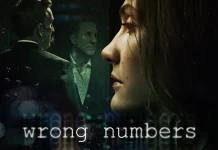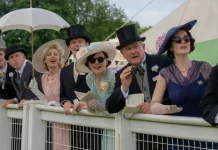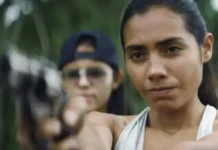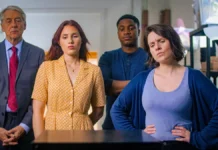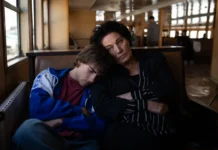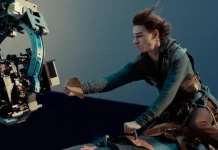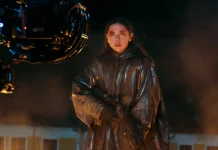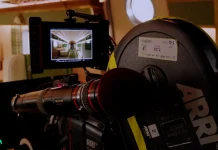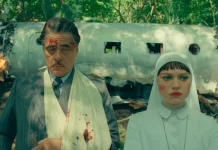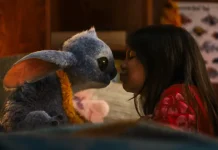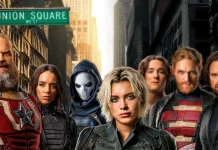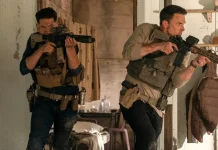More than two decades after 28 Days Later redefined zombie horror, and nearly 17 years after 28 Weeks Later expanded the franchise’s scale, Danny Boyle returns with 28 Years Later — a bold, visually arresting sequel that proves the franchise still has teeth.
In a genre flooded with familiar tropes, this latest installment dares to push thematic boundaries while delivering the visceral thrills fans expect. The result is an ambitious and occasionally uneven, but ultimately compelling, new chapter in modern horror cinema.
The Road to 28 Years Later
When 28 Days Later (2002) burst onto the scene, it helped revitalize the zombie genre with its raw handheld visuals, fast-moving infected, and eerie post-apocalyptic London. Its sequel, 28 Weeks Later (2007), expanded on this world with bigger action and a broader military focus.

Fans have been clamoring for a third entry ever since. Now, with 28 Years Later, Boyle and writer Alex Garland reunite to continue the story — not as a simple follow-up, but as a thematic reinvention that reflects how the world (and horror itself) has changed since the early 2000s.
A Cinematic & Thematic Leap Forward
Boyle and longtime collaborator Anthony Dod Mantle craft a film that is as breathtaking in scope as it is intimate in emotion. Mantle’s use of an ultra-wide aspect ratio and unconventional camera work (much of it shot on iPhone 15 Pro Max) creates a haunting visual language that feels both expansive and claustrophobic.

Gone are the handheld jitters of the original; instead, the film embraces a strange, hypnotic atmosphere that draws viewers into its world. The cinematography, frequently described by critics as “intoxicating,” elevates 28 Years Later beyond typical franchise fare.
Thematically, the film is equally ambitious. Garland’s script reflects modern anxieties—post-COVID trauma, Brexit-era isolation, questions of national identity—while never losing sight of the human story at its core. Grief and memory are the driving forces here, giving the film emotional resonance well beyond genre expectations.
The Evolution of the Infected
One of the film’s boldest moves is its evolution of the infected. While still terrifying, they’ve adapted—smarter, more coordinated, and with chilling new behaviors that upend audience expectations.

These aren’t just mindless monsters; they represent something closer to a tragic offshoot of humanity. This change injects fresh tension into action sequences, while also inviting reflection on the nature of contagion and survival.
Critics like The Guardian and The Daily Beast have praised this aspect, noting how it helps the franchise stay relevant in an oversaturated zombie market.
Performances That Anchor the Apocalypse
Strong performances anchor the film’s emotional weight. Young newcomer Alfie Williams shines as Spike, a child born into this bleak world whose coming-of-age journey provides the heart of the story.

Ralph Fiennes, introduced halfway through as Dr. Ian Kelson, delivers a complex, layered portrayal — by turns cold, haunted, and magnetic. Jodie Comer and Aaron Taylor-Johnson also impress, bringing nuance to their roles as battle-worn survivors. Across the board, the cast grounds the film’s more philosophical moments in raw, human emotion.
A Franchise That’s Grown Up With Its Audience
What makes 28 Years Later so satisfying is that it doesn’t simply rehash old beats. Like its audience, the franchise has matured. Where 28 Days Later was about immediate survival, and 28 Weeks Later explored military overreach, this entry contemplates what comes after — how people rebuild their sense of self and community after unimaginable loss.

In this way, the film resonates with today’s post-pandemic viewers, exploring how societies (and individuals) reckon with long-term trauma.
Soundtrack and Atmosphere
A key ingredient in this haunting mix is the soundtrack. Composer John Murphy returns to the series, blending minimalist piano, swelling synths, and eerie ambient textures.

The music heightens the film’s emotional beats and underscores the dread that permeates every frame. Whether in quiet character moments or explosive action scenes, Murphy’s score helps maintain a gripping, immersive tone throughout.
A Bold, If Uneven, Return
That’s not to say the film is without flaws. Some critics have noted its uneven pacing and occasionally disjointed narrative structure. At times, Boyle’s stylistic ambitions clash with the demands of horror storytelling, leading to moments where the film’s flow stutters.
Yet even these imperfections stem from a laudable desire to evolve the series. Rather than retreading old ground, 28 Years Later takes risks — and for many viewers, these risks pay off in a rich, thought-provoking experience.
Final Verdict
28 Years Later isn’t just a return to form — it’s an evolution. With stunning visuals, emotional depth, and bold new ideas, Danny Boyle and Alex Garland prove that this franchise still has something urgent and vital to say.
It may not be a perfect film, but it’s a fiercely intelligent, deeply felt entry in modern horror — one that will likely spark conversation long after the credits roll. For fans of the series and newcomers alike, it’s essential viewing.


